#skardu valley in winter
Explore tagged Tumblr posts
Text
At the foot of Pakistan's impossibly high mountains whitened by frost all year round, farmers grappling with a lack of water have created their own ice towers. Warmer winters as a result of climate change have reduced the snowfall and subsequent seasonal snowmelt that feeds the valleys of Gilgit-Baltistan, a remote region home to K2, the world's second-highest peak. Farmers in the Skardu valley, at an altitude of up to 2,600 meters (8,200 feet) in the shadow of the Karakoram mountain range, searched online for help in how to irrigate their apple and apricot orchards.
Continue Reading.
360 notes
·
View notes
Text

Skardu Tour and Travel – A Complete Guide to the Jewel of Pakistan
Skardu Tour and Travel, a breathtaking paradise nestled in the Gilgit-Baltistan region of Pakistan, is a dream destination for travelers who seek adventure, culture, and unparalleled natural beauty. With its majestic mountains, crystal-clear lakes, and historic sites, Skardu offers an unforgettable travel experience for those who wish to explore the unexplored.
Why Visit Skardu?
Skardu is a heaven for nature lovers, trekkers, and mountaineers. It serves as a gateway to some of the world's highest peaks, including K2, Broad Peak, and Gasherbrum I & II. The region is also home to stunning valleys, mesmerizing lakes, and culturally rich villages, making it a perfect destination for adventure seekers and peace lovers alike.
How to Reach Skardu
By Air
The fastest and most convenient way to reach Skardu is by air. Pakistan International Airlines (PIA) operates regular flights from Islamabad to Skardu Airport. The flight offers breathtaking aerial views of Nanga Parbat and other snow-capped peaks. However, flights are subject to weather conditions, so it is advisable to check schedules in advance.
By Road
For those who enjoy scenic road trips, traveling to Skardu by road is an adventure in itself. The journey from Islamabad to Skardu takes approximately 18 to 20 hours via the Karakoram Highway (KKH) and Skardu Road. The road trip offers mesmerizing landscapes, including the confluence of the Indus and Gilgit Rivers, lush green valleys, and towering mountains.
Best Time to Visit Skardu
The best time to visit Skardu depends on the type of experience you seek:
Spring (April to June): The valley is in full bloom, with colorful flowers and pleasant weather.
Summer (June to September): Ideal for trekking, camping, and sightseeing as temperatures remain moderate.
Autumn (September to November): The landscape turns golden, offering stunning photographic opportunities.
Winter (December to March): A snowy wonderland perfect for winter sports and adventure tourism.
Top Attractions in Skardu
1. Shangrila Resort & Lower Kachura Lake
Popularly known as Heaven on Earth, Shangrila Resort is home to Lower Kachura Lake, a serene water body surrounded by lush greenery and mountains. The resort features unique Tibetan-style architecture and provides a luxurious stay experience.
2. Upper Kachura Lake
Located a few kilometers from Lower Kachura Lake, Upper Kachura Lake is a pristine alpine lake with turquoise waters and breathtaking surroundings. It is a must-visit for those who enjoy boating, fishing, and picnicking.
3. Deosai National Park
Known as the “Land of Giants”, Deosai National Park is the second-highest plateau in the world. The park is home to brown bears, golden marmots, and a diverse range of flora and fauna. Summer is the best time to visit when the plateau is covered with colorful wildflowers.
4. Skardu Fort (Kharpocho Fort)
A historical marvel, Skardu Fort is situated on a high mountain overlooking the city. It was built in the 16th century by the Baltistan rulers and offers panoramic views of Skardu and the Indus River.
5. Satpara Lake
One of the largest freshwater lakes in the region, Satpara Lake is an essential water reservoir for Skardu. The deep blue waters surrounded by rugged mountains make it a perfect spot for boating, photography, and relaxation.
6. Shigar Valley and Shigar Fort
A trip to Skardu is incomplete without visiting Shigar Valley, known for its lush green fields, apricot orchards, and traditional Balti culture. Shigar Fort, also known as the Fort on the Rock, has been transformed into a luxury heritage hotel, offering a glimpse into the region's royal past.
7. Khaplu Valley and Palace
Another breathtaking valley near Skardu, Khaplu Valley is famous for its picturesque landscapes, waterfalls, and cultural heritage. The Khaplu Palace, a beautifully restored fort, now serves as a museum and hotel, preserving the ancient Balti architecture.
8. Manthoka Waterfall
One of the most beautiful waterfalls in Gilgit-Baltistan, Manthoka Waterfall is an awe-inspiring natural wonder. The waterfall cascades from 180 feet, surrounded by green pastures, making it a perfect picnic and photography spot.
Trekking and Mountaineering in Skardu
Skardu is the starting point for many trekking and mountaineering expeditions. Some of the most famous treks include:
K2 Base Camp Trek: A challenging trek leading to the base of the world's second-highest peak.
Biafo Glacier & Hispar La Trek: A trek through one of the longest glaciers in the world.
Snow Lake Trek: A mesmerizing trek through the frozen wonders of the Karakoram.
Local Cuisine of Skardu
While visiting Skardu, one must indulge in authentic Balti cuisine, which includes:
Mamtu: Traditional steamed dumplings filled with minced meat and spices.
Balay: A delicious noodle soup made with homemade wheat noodles and broth.
Chapshuro: A Balti-style meat pie stuffed with spiced minced meat.
Apricot Juice & Local Herbal Tea: Refreshing and naturally healthy beverages unique to the region.
Accommodation in Skardu
Skardu offers a variety of accommodation options, from luxury resorts to budget-friendly guesthouses:
Luxury: Serena Shigar Fort, Shangrila Resort, Khaplu Palace.
Mid-Range: PTDC Motel, Tibet Hotel, Mashabrum Hotel.
Budget: Local guesthouses and campsites for budget travelers.
Conclusion
Skardu is a hidden paradise that offers something for every traveler. Whether you seek adventure, tranquility, or cultural exploration, Skardu is a destination that promises an unforgettable experience. From majestic mountains and crystal-clear lakes to historical forts and cultural heritage, Skardu is a must-visit for anyone looking to explore the natural beauty of Pakistan.
1 note
·
View note
Text
The Enchanting Tales of the top 10 coldest places in Pakistan
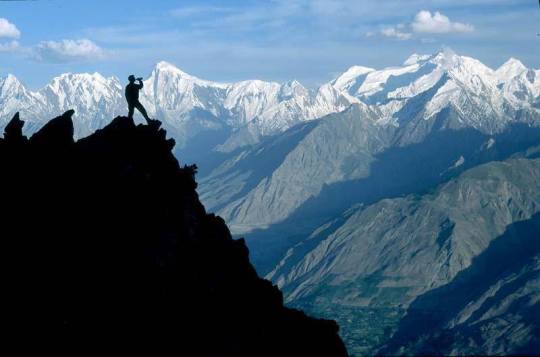
As the winter chill sets in and people bundle up in their warmest coats, spare a thought for those living in the coldest places of Pakistan. Nestled amidst towering mountains and icy winds, these regions experience extreme temperatures that most can only imagine. From the frosty peaks of Skardu to the freezing valleys of Hunza, these areas are not for the faint-hearted. In this article, we will explore the coldest places in Pakistan, revealing their breathtaking beauty and unforgiving climate. Step into a land where winters are more than just snowflakes gently falling from the sky, they're bone-chilling gusts that freeze your soul. Welcome to Pakistan's coldest corners - places that defy ordinary notions of coldness with their mind-numbing temperatures and harsh conditions. Here, survival is an art form mastered by resilient locals who have learned to embrace winter's icy grip rather than run from it. Join us as we embark on an adventure through these coldest places in Pakistan. Here are the top 10 coldest places in Pakistan - Ziarat Baluchistan - Skardu Gilgit Baltistan - Hunza Valley Gilgit Baltistan - Chitral Khyber Pakhtunkhwa - Kalat Baluchistan - Swat Valley Khyber Pakhtunkhwa - Malam Jabba Gilgit Baltistan - Rawalakot Azad Kashmir - Quetta Baluchistan - Murree Punjab Ziarat Baluchistan Nestled amid the snow-capped peaks of Baluchistan in Pakistan lies Ziarat, a hidden gem that transforms into a winter wonderland. As the coldest city in Pakistan, Ziarat offers an enchanting escape from the bustling city life. The mesmerizing beauty of this winter paradise is unparalleled. This charming hill station known as the Juniper Forest offers an enchanting retreat from the scorching heat of the plains during summer and becomes a magical paradise in winter. With temperatures dropping to sub-zero levels, Ziarat dons an ethereal beauty as every nook and cranny is blanketed in pure white snow. Top 10 most beautiful places to visit in Pakistan What sets Ziarat apart from other winter destinations is its unique blend of scenic landscapes and cultural attractions. For those seeking solace, Ziarat Residency, where Quaid-e-Azam Muhammad Ali Jinnah spent his last days, offers tranquility like no other place, surrounded by snow-covered junipers. Ziarat boasts a rich history that adds depth to any visit. Dating back to British colonial times, this town served as a preferred summer retreat for high-ranking officials who sought respite from the oppressive heat elsewhere.
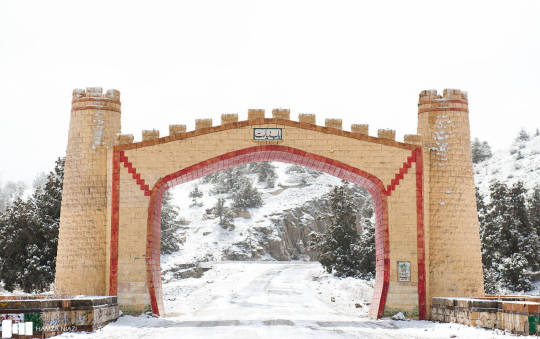
Ziarat City Entrance Skardu Gilgit Baltistan Wrapped in a pristine white blanket of snow, Skardu transforms into a winter wonderland that beckons both adventurers and nature enthusiasts. Nestled amidst the towering peaks of Karakoram and the Himalayas, this picturesque town experiences freezing winters like no other place in Pakistan. The unique geographical location of Skardu, with its high mountain ranges and deep valleys, makes it one of the coldest places in Pakistan. Skardu valley, Gilgit Baltistan Tour The freezing winters of Skardu bring forth an ethereal beauty that captivates the senses. As gusts of wind whip through the narrow valleys, they carry tiny ice crystals that shimmer in the sunlight like magical diamonds. The frozen rivers and lakes reflect the muted colors of the surrounding landscape, creating a surreal mirror-like effect. The magnificent peaks stand tall and majestic against clear blue skies, their tops glistening with pristine white snow. Experiencing the freezing winters of Skardu is not for the faint-hearted but is undoubtedly an adventure worth undertaking for those seeking serenity amid nature's icy grip.
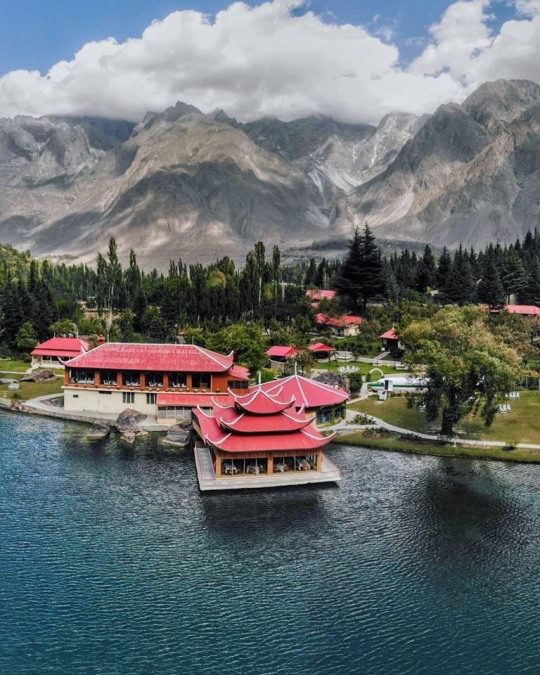
Shangrila resort Skardu Valley Hunza Valley Gilgit Baltistan Nestled in the picturesque valleys of Northern Pakistan, the Hunza Valley is a winter wonderland that beckons travelers seeking an adventure amidst icy landscapes. Renowned as one of the coldest places in Pakistan, this hidden gem offers stunning views of snow-covered mountains and crystal-clear lakes. With its towering snow-capped peaks, frozen rivers and lakes, and pristine white meadows, this region transforms into a magical spectacle during winter. As you step into this frozen paradise, let yourself be captivated by the breathtaking beauty in every direction. 9 Days Hunza Valley, Pakistan Tour The Hunza Valley is renowned for its stunning glaciers, showcasing nature's mesmerizing talent for sculpting ice. These colossal ice formations create a surreal atmosphere as they glitter under the sunlight and reflect hues of blue and turquoise. Please take a moment to stand in awe before these marvels of nature; feel the chill in the air as you witness the silent power of these ancient glaciers slowly shaping the land around them. This section on the icy landscapes of Hunza Valley delves into an enchanting realm where ice transforms ordinary scenery into extraordinary vistas.
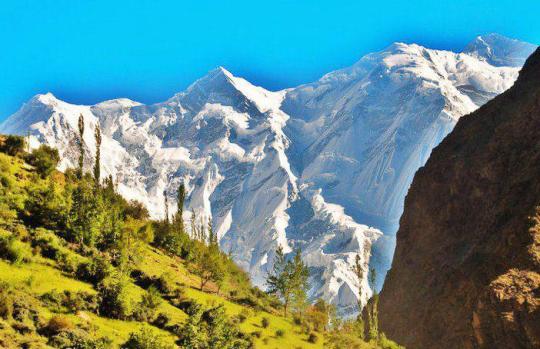
Rakaposhi peak (7788 M)Hunza Pakistan Chitral Khyber Pakhtunkhwa Chitral is nestled among the stunning Hindukush mountain range and is often hailed as one of the coldest places in Pakistan. This mesmerizing region boasts breathtaking landscapes covered in blankets of pristine snow during the winter months. Picture yourself surrounded by majestic peaks, snow-capped trees, and frozen rivers; it's like stepping into a real-life painting. What sets Chitral apart from other cold destinations is its rich cultural heritage. The warmth and hospitality of the local people provide a stark contrast to the chilly temperatures. Embrace this opportunity to engage with the Kalash tribe, known for their unique traditions and vibrant festivals. Immerse yourself in their folklore, music, dance, and handmade crafts – truly an experience unlike any other. So, pack your warmest clothes and get ready to explore one of the coldest places in Pakistan—Chitral, a haven where nature and culture harmonize amidst snow-clad landscapes that will undoubtedly leave you breathless.
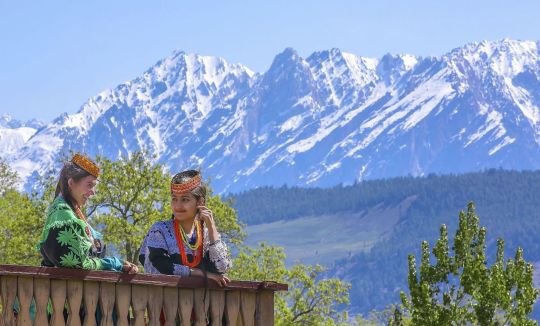
Kalash People of Chitral Valley Kalat Baluchistan As winter descends upon the rugged region of Kalat, a unique and awe-inspiring spectacle unfolds. Nestled in the province of Balochistan, this town is considered one of the coldest places in Pakistan. The frigid winds blow relentlessly across its barren landscapes, transforming it into a winter wonderland. But what truly sets Kalat apart is not just its freezing temperatures, but the stoic resilience and adaptability of its people. Top 10 beautiful places to visit in Islamabad Kalat's residents have mastered the art of surviving in these extreme conditions. From wearing layers upon layers of clothing to lighting bonfires throughout their homes, they have developed ingenious ways to battle against Mother Nature's icy grip. Despite the hardships, there is a unique sense of camaraderie that emerges during these freezing months. Neighbors come together with warm cups of tea and comforting smiles, sharing stories and laughter as they navigate through this frosty ordeal.

Kalat Balochistan, Pakistan Swat Khyber Pakhtunkhwa Nestled in the mesmerizing mountains of Khyber Pakhtunkhwa, Swat Valley transforms into a true winter fairytale once the temperatures drop. As one of the coldest places in Pakistan, this picturesque region captivates visitors with its pristine snow-covered landscapes and breathtaking vistas. From glistening frozen waterfalls to charming wooden cottages dusted with snow, every corner of Swat Valley exudes a magical aura during the winter months. But Swat Valley's winter charm is not just limited to outdoor excitement; it also has a cultural allure. The local people are known for their hospitality and warmth, welcoming visitors with open arms even during the coldest months. With traditional festivities, tourists get a chance to immerse themselves in the rich culture and traditions of this picturesque region. Exploring ancient Buddhist sites like Mingora's Saidu Stupa or taking a peaceful walk through dense forests covered in snow provide opportunities for both adventure seekers and history buffs alike. 4 Days Islamabad Swat Kalam Valley Tour So, pack your warmest clothes and brace yourself for an unforgettable journey into Swat Valley - Pakistan's very own winter fairyland. Immerse yourself in breathtaking landscapes, embark on thrilling adventures, and witness cultural traditions that have stood strong amidst changing times. This hidden gem promises an experience that will leave you spellbound long after you say goodbye to its snowy wonderland.

Swat Valley KPK Malam Jabba Khyber Pakhtunkhwa Malam Jabba, nestled in the heart of the Swat Valley, is not only a popular ski resort but also one of the coldest places in Pakistan. Surrounded by awe-inspiring mountains and captivating landscapes, this frozen paradise offers a unique winter experience. What sets Malam Jabba apart from other cold destinations in Pakistan is its historical significance with ancient Buddhist stupas and monasteries that are spread across the resort. These remnants of archaeological sites provide glimpses into a rich past, and visitors to Malam Jabba can immerse themselves in natural beauty and cultural exploration. Things to know about Pakistan before you visit this beautiful land While many visit Malam Jabba for its world-class ski slopes, there's so much more to discover beyond the adrenaline rush on the snow-covered peaks. Nature enthusiasts will find solace in exploring nearby trails that lead to hidden valleys and pristine waterfalls, creating an unparalleled sense of tranquility amidst this frozen wonderland. Furthermore, local hospitality adds a charming touch to your experience as you warm up with steaming cups of kahwa (traditional tea) while savoring traditional delicacies at local cafes offering authentic Pakistani cuisine. So, if you're looking for an adventurous winter getaway that combines nature's splendor with cultural immersion, Malam Jabba should be at the top of your travel list.

Malam Jabba Swat Pakistan Rawalakot Azad Kashmir Located in the heart of Azad Kashmir, Rawalakot is a charming city that boasts unmatched natural beauty and tranquility. Often referred to as Paradise on Earth, this picturesque destination mesmerizes visitors with its snow-capped mountains, lush green valleys, and crystal-clear lakes. With an average elevation of 5,400 feet above sea level, it remains one of the coldest places in Pakistan throughout the year. In addition to its outdoor activities, Rawalakot Azad Kashmir also boasts a rich cultural heritage that avid travelers can explore. The town is renowned for its traditional wooden architecture, which adds a unique charm to every corner. Visitors can delve into local history by visiting ancient temples and shrines, or immerse themselves in art and culture at various museums and galleries showcasing indigenous artwork. As the coldest city in Pakistan, Rawalakot Azad Kashmir promises an unforgettable winter retreat that combines nature's magnificence with cultural immersion.

Banjosa Lake Rawalakot Azad Kashmir Quetta Baluchistan Quetta considered the coldest city in Pakistan, is notorious for its bone-chilling temperatures. Nestled amidst the picturesque mountains of Baluchistan, it stands as a testament to the harsh winters that sweep across Pakistan. With average temperatures dropping below freezing point and sometimes even reaching -18 degrees Celsius, Quetta takes great pride in being one of the coldest places in Pakistan. But there is more to Quetta's chilling temperature than meets the eye. While it may deter some from venturing outdoors, for others, it offers unique opportunities for thrilling adventure and exploration. The frozen lakes and rivers become playgrounds for ice skating enthusiasts looking to glide gracefully on their frozen surfaces. Whether one seeks adventure or wishes to experience an intimate bond with nature and its people, Quetta's chilling temperature serves as both a challenge and an invitation—a chance to embrace the frozen beauty of this remarkable city while discovering new depths of resilience within ourselves.
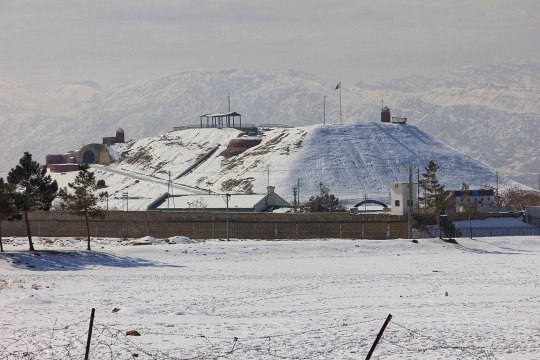
Quetta Fort Mirri Muree Punjab Nestled in the snow-capped peaks of the Pir Panjal Range, lies the enchanting hill station of Murree. Known for its captivating beauty and invigorating climate, this picturesque destination has earned its reputation as one of the coldest places in Pakistan. As winter blankets this picturesque retreat, it transforms into a wonderland that captivates all who venture there. Every turn offers breathtaking views of rolling hills blanketed in pristine white snow. The serenity that envelops Murree in winter is unlike any other, offering visitors a chance to pause and reconnect with nature. 3 Days Murree Tour Package Beyond its scenic beauty, Murree also holds a rich history that adds another layer of appeal to its winter charm. Established during British colonial rule as a summer retreat for officials seeking respite from the scorching heat of the plains, it has retained much of its old-world charm and elegance. Colonial-era buildings dotting its streets provide glimpses into the past while adding an air of nostalgia to this serene winter escape. While many flock to Murree for its tranquil atmosphere and stunning landscapes, it also offers many activities for thrill-seekers and adventure enthusiasts. From skiing down, powdery slopes to embarking on invigorating treks through snow-laden trails, there is no shortage of excitement for those craving outdoor adventures amidst the winter stillness. The coldest places in Pakistan offer a unique and challenging winter experience like no other. Whether it be Skardu's freezing temperatures or Murree's heavy snowfall, each destination has its charm and attractions for adventurous individuals seeking a thrilling winter getaway. However, it is important to remember that visiting these areas requires proper preparation and caution due to the extreme conditions. So, if you're ready to embrace the cold and embark on an unforgettable journey, pack your warmest clothes and gear up for the adventure of a lifetime in the top 10 coldest places in Pakistan.

Muree Pakistan Read the full article
#Chitral#Hunza#Kalat#MalamJabba#MureePunjab#QuettaBaluchistan#RawalakotAzadKashmir#Skardu#Swat#ZiaratBalochistan
0 notes
Text
Most beautiful cold places in Pakistan
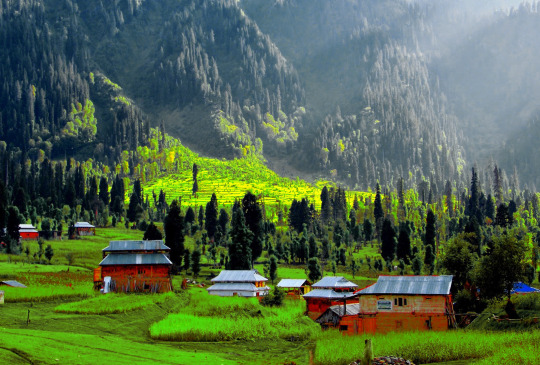
Pakistan is known for its diverse landscapes, and it is home to several beautiful cold places that offer breathtaking scenery. The country is rich in natural beauty, and there are some most beautiful scenic places in Pakistan, each with its own unique charm. Here are some of the most beautiful cold places in Pakistan:
Hunza Valley:
Located in Gilgit-Baltistan, Hunza Valley is known for its stunning mountain views, including Rakaposhi, Ultar Peak, and Ladyfinger Peak. The valley is surrounded by snow-capped peaks, lush green meadows, and vibrant orchards.
Naltar Valley:
Situated in Gilgit-Baltistan, Naltar Valley is famous for its enchanting beauty and ski resorts. The valley is adorned with colorful wildflowers during the summer months, while in winter, it transforms into a snow-covered wonderland.
Skardu:
Nestled in the Karakoram Range, Skardu is a picturesque town surrounded by towering mountains, including K2, the second-highest peak in the world. The region offers breathtaking views of glaciers, lakes, and scenic valleys.
Murree:
Located in the Pir Panjal Range, Murree is a popular hill station near Islamabad. It is known for its cool climate, lush forests, and beautiful viewpoints offering panoramic vistas of the surrounding hills and valleys.
Swat Valley:
Swat Valley, often referred to as the "Switzerland of Pakistan," is located in Khyber Pakhtunkhwa province. It features stunning landscapes, including snow-capped peaks, alpine meadows, and crystal-clear lakes such as Mahodand Lake and Lake Saif-ul-Malook.
Kalash Valley:
Situated in the Chitral District of Khyber Pakhtunkhwa, Kalash Valley is renowned for its unique culture, ancient traditions, and beautiful landscapes. Surrounded by snow-capped mountains, the valley offers picturesque views and is home to the indigenous Kalash people.
Fairy Meadows:
Located in the Gilgit-Baltistan region, Fairy Meadows is a lush green meadow surrounded by towering peaks, including Nanga Parbat. It offers stunning views of the mountain and is a popular base camp for trekkers.
Pakistan is blessed with breathtaking landscapes, and it offers numerous scenic road trips that take you through majestic mountains, lush valleys, and picturesque villages. Here are some of the most beautiful road trips in Pakistan:
Karakoram Highway (KKH):
Known as the "Eighth Wonder of the World," the Karakoram Highway is one of the highest paved roads in the world. It stretches from Islamabad to the border of China, passing through Gilgit-Baltistan. The route offers stunning views of the Karakoram and Himalayan mountain ranges, glaciers, and the mighty Indus River.
Naran-Kaghan Valley:
This road trip takes you through the stunning Naran-Kaghan Valley in Khyber Pakhtunkhwa province. The journey from Abbottabad to Naran offers breathtaking views of snow-capped peaks, alpine meadows, crystal-clear lakes, and gushing waterfalls.
Shandur Pass:
Located at an elevation of 3,700 meters in Gilgit-Baltistan, the road trip to Shandur Pass is a thrilling adventure. The journey takes you through rugged mountain terrain and offers panoramic views of the Hindukush Range. Shandur Pass is also known for hosting the world's highest polo ground.
Swat Valley:
The road trip to Swat Valley from Islamabad or Peshawar is a scenic delight. As you drive through the Malakand Pass, you'll witness the breathtaking views of the Swat River, lush green valleys, terraced fields, and snow-capped peaks.
Coastal Highway:
Stretching along the Arabian Sea, the Coastal Highway is a mesmerizing road trip from Karachi to Gwadar. The route offers scenic coastal views, pristine beaches, rugged cliffs, and fishing villages.
Kalash Valley:
The road trip to Kalash Valley in Chitral is an enchanting journey. As you drive through the winding roads, you'll be treated to stunning views of the Hindu Kush mountains, gorges, and the picturesque villages of the indigenous Kalash people.
Deosai Plains:
The road trip to Deosai Plains in Gilgit-Baltistan is a unique experience. The route takes you through remote mountain roads and leads to the second-highest plateau in the world. Deosai is known for its vast grasslands, wildflowers, and the opportunity to spot rare wildlife like the Himalayan brown bear.
0 notes
Text
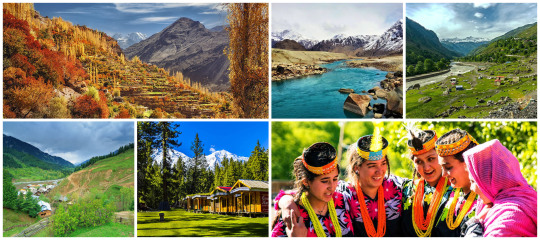
Stepping into the land of enchantment, I embarked on a transformative journey through the northern areas of Pakistan. With a heart brimming with anticipation and a mind ready to be captivated, I set foot in this magical region known for its breathtaking landscapes, towering peaks, and warm hospitality. Little did I know that the next few weeks would be a life-altering experience, immersing me in the beauty and culture of Pakistan's northern gems.
Hunza Valley: My adventure began in the fabled Hunza Valley, a place straight out of a fairytale. Surrounded by towering peaks, I found myself in awe of the majestic Rakaposhi and Ultar peaks that seemed to touch the sky. As I wandered through the terraced fields and apricot orchards, the warm smiles of the local people embraced me. Exploring the ancient Baltit Fort, I delved into the rich history and cultural heritage of the region.
Skardu: Journeying further, I arrived in Skardu, a gateway to heavenly landscapes. The turquoise waters of Satpara Lake reflected the surrounding snow-capped peaks, creating a postcard-perfect view. The thrilling ride to the world's highest cold desert, the Katpana Desert, left me speechless as I stood amidst the golden sands, marveling at nature's artistry. Skardu became my base for embarking on treks and adventures, each step leading me closer to discovering my inner strength.
Naltar Valley: In the tranquil embrace of Naltar Valley, I reveled in nature's kaleidoscope. The vibrant meadows painted a picture of serenity, while the snow-crowned peaks whispered tales of ancient glory. Skiing down the slopes during the winter season was an exhilarating experience, leaving an indelible mark on my soul.
Fairy Meadows: Nestled beneath the watchful gaze of Nanga Parbat, Fairy Meadows cast a spell on me. The emerald green meadows stretched endlessly, as if inviting me to leave the ordinary behind. Camping amidst the tranquility of nature, I witnessed the sun painting the mighty peak in shades of gold, a sight that etched its beauty into the depths of my being.
Khunjerab Pass: Crossing the highest paved international border, Khunjerab Pass took my breath away. The vastness of the Khunjerab National Park unfolded before me, with snow-capped peaks standing as guardians of the wild. Observing the rich biodiversity and catching a glimpse of the elusive Himalayan brown bear filled me with a profound sense of wonder and reverence for our natural world.
As my journey through the northern areas of Pakistan drew to a close, I carried a piece of this paradise within me. The splendor of Hunza Valley, the awe-inspiring landscapes of Skardu, the tranquility of Naltar Valley, the enchantment of Fairy Meadows, and the majestic beauty of Khunjerab Pass all left an indelible mark on my soul. Beyond the picturesque vistas, it was the warmth and kindness of the local people that made this journey truly unforgettable. I left with a renewed appreciation for nature's wonders and a deeper understanding of the diverse cultures that call this region home. The northern areas of Pakistan had opened my eyes, expanded my horizons, and gifted me memories that will forever reside in my heart.
#adventure#hunza valley#pakistan#explore#naran#kpk#torism#travel#Fairy Meadows#Khunjerab Pass#Naltar Valley#skardu
1 note
·
View note
Text
youtube
#travel vlog#Ugly And Traveling#travel around the world#Manthokha Waterfall#Manthokha Waterfall Skardu#Manthokha Waterfall Skardu Pakistan#Kharmang Valley Skardu#Gilgit Baltistan#skardu pakistan#gilgit#skardu#skardu valley#manthokha waterfall pakistan#manthoka waterfall#manthokha waterfall#manthoka#manthoka waterfall skardu#manthoka waterfall a place to remember#manthoka waterfall in winter#manthoka waterfall skardu roads skardu series#skardu valley tune#khyber#ugly and traveling#uglyandtraveling#travel channel#travel backpack#travel blogger#ugly & traveling#travel#traveling vlog
0 notes
Text
Blog #5: Oh, the places you will go
Over the past 2 years, many of us haven’t been able to travel anywhere to see family or even just for the sake of travelling. Travelling is something that has always been on my bucket list. Travelling and seeing the world also helps us broaden our understanding of nature. Although a relationship with nature can be formed anywhere in the world, even in your own backyard, travelling allows us to experience different parts of the world and allows us to observe various species of plants, animals and other natural wonders. Obviously, travelling requires money and time which is not something I have right now. Once the Covid restrictions end and I have enough money saved up, after graduating here are some of the places that I would like to visit.
There are so many beautiful places in our very own Canada that I have yet to explore:
Aurora borealis, Canada:
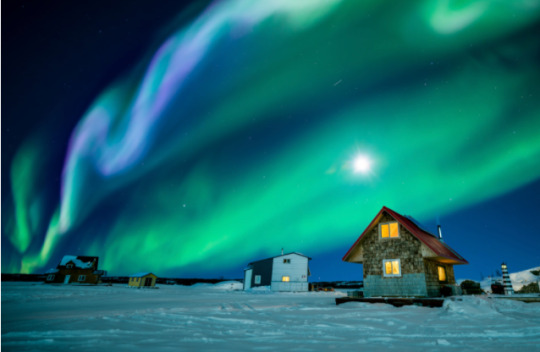
The Aurora borealis is one of the seven wonders of the world. When electrically charged particles from the sun collide with gasses as they enter our atmosphere, the aurora borealis AKA the northern lights are produced. This phenomenon occurs all year round, but they can only be seen in the winter as it is too bright at other times of the year for them to be visible. The sky's the darkest from November to March so that would be the most ideal time to visit. From my research Whitehorse, Yukon is the best place to view the northern lights in Canada. There are so many fun activities that I would want to do here some of which are dogsledding, snowmobiling and visiting the Yukon Wildlife preserve.
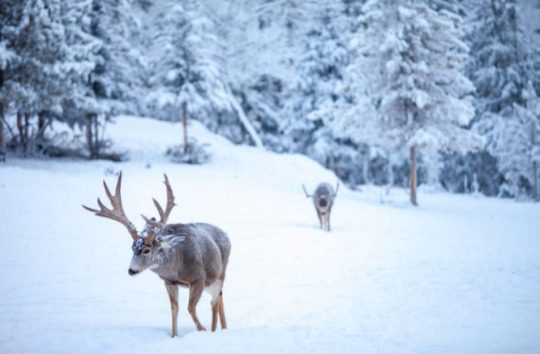
Yukon Wildlife preserve
Banff, Alberta:
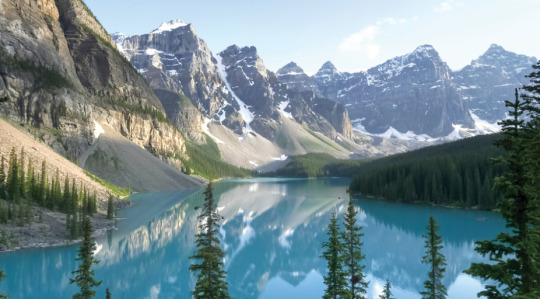
Banff and Lake Louise is a major tourist hotspot in Alberta and is known for some of the most breathtaking mountain locations on the planet. Banff and Lake Louise offer countless activities and have easy access to pristine nature, numerous outdoor excursions, jaw-dropping landscapes, and a rich history and culture. I love to hike and it has always been a dream of mine to hike in such a beautiful place. When I go to Banff, the hike that I would go on would be one that leads to a lake or waterfall, for example the Rockbound lake hike which leads to the high alpine lake surrounded by a cliff and a breathtaking view. After doing some research I found that this hike is 16.8 km long. While it is on the longer side undertaking this hike would be a challenging and memorable experience for me.
Some places outside of Canada that I have been dreaming to visit are:
Gilgit-Baltistan, Pakistan:
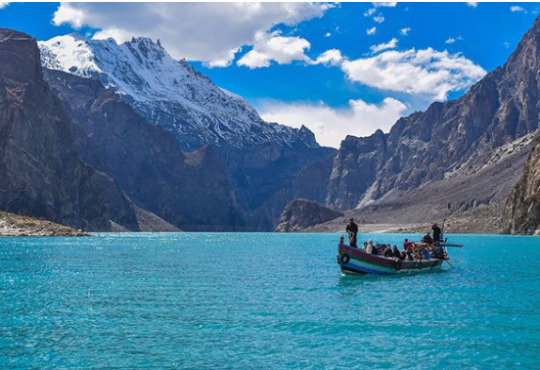
Hunza Valley
Five of the "eight-thousanders" (mountains higher than 8000 meters above sea level) and more than fifty peaks higher than 7,000 meters can be found in Gilgit-Baltistan. The three primary centers for expeditions to the mountains are Gilgit, Astore, and Skardu. Some of the world's highest mountain ranges can be found in this region. Hunza Valley is one of the most beautiful valleys in Gilgit-Baltistan and has many tourist hotspots and this is where I would want to spend most of my time. My mom told me about how she visited this place with my Grandfather when she was my age and I hope to be able to go there one day too as she describes it as being the most breathtaking sight she has ever seen.
Grand Canyon, Arizona:

Like the Northern Lights the Grand Canyon is also one of the seven wonders of the world and is one of the most visited natural attractions and for good reasons too. This natural wonder is 277 miles long and 18 miles wide. The entry points are the North, South and West rims of the canyon. The South and West rim are the most popular spots for exploring this natural wonder. Both of these rims have hiking trails leading to the grandeur of the canyon. I would like to hike at the West rim because it also features a river and is suitable for people of all skill levels unlike the South rim. Although I love hiking I would not say that I am someone who is highly skilled and I am somewhat out of practice.
These are just some of the places that I would like to visit in my lifetime. I could write about so many more, but for now I will leave you guys with this. Thank you so much for reading my blog, I hope you enjoyed it. I would love to hear about some of the places you want to visit or have already visited. I hope we all get a chance to experience memorable adventures and fuel our wanderlust
Links for more information:
https://grandcanyonwest.com/story/how-do-you-choose-grand-canyon-west-rim-vs-south-rim/?gclid=Cj0KCQiAr5iQBhCsARIsAPcwROPaspjiEtdO_t1r3ZOqOJ_Tmkoc0fTak6rsLyRtSlLSoX32UE8q1AEaAj2iEALw_wcB
https://en.wikipedia.org/wiki/Tourism_in_Gilgit-Baltistan
https://www.banfflakelouise.com/hiking?https://www.banfflakelouise.com/hiking?utm_source=google&utm_medium=cpc&utm_campaign=TA_DMO_search_program&utm_term=Hiking&utm_content=owned&gclid=Cj0KCQiAr5iQBhCsARIsAPcwROOSZkSxr-W5JrxLLJ9Vx0_BoJ9tmVqXgfwGKJpSDqDBnB-Y6ZVEV_oaAgYdEALw_wcB
https://www.canadianaffair.com/blog/northern-lights-in-canada/
6 notes
·
View notes
Photo
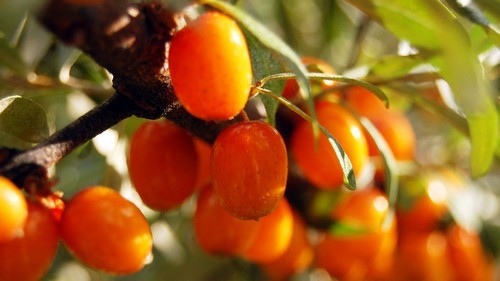
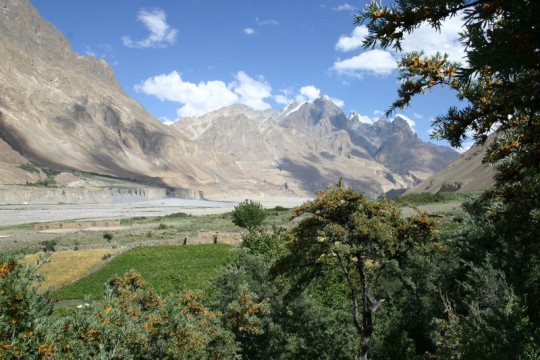
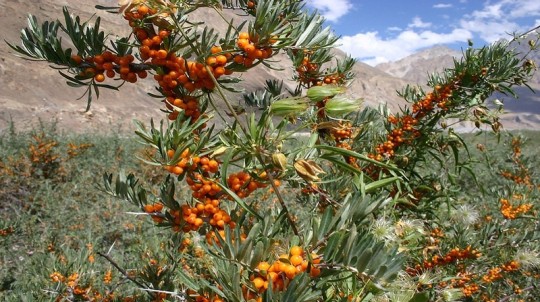
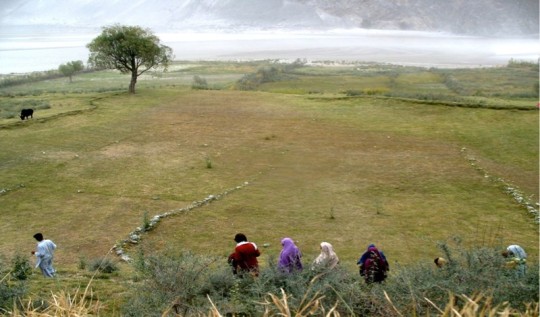
Pakistan's Sea Buckthorn Berries Are Beautifully Underappreciated
By Tahereh Sheerazie, 15/4/15
Sea buckthorn is widely coveted in Michelin-starred kitchens like noma, but people in northern Pakistan, where the orange and red berries grow like wildfire, couldn't care less—even if it does make a delicious and healthy jam.
It was everywhere up north, but I hadn't noticed it on my previous trips.
It grows wild, in Pakistan's Shigar Valley of Baltistan and Shimshal Valley of upper Hunza/Gojal region; a fruit that is widely coveted in Western Michelin-starred kitchens like noma. But locals in these far north valleys care less about eating it and more about using it as barbed wire for fencing around their farmland to keep the animals out.
It's an innocuous part of the landscape in the dry Karakorum mountain range high up in Pakistan's northeast mountainous terrain, home to K2 and many other mighty peaks. Mostly growing wild along river beds, the first time I encountered sea buckthorn (Hippophae) was in late summer of 2008 in upper Gojal's remote 10,000 feet Shimshal Valley in northern Pakistan.
It is here where the ripe orange and red berries grow along the water's edge and brighten the landscape with their brilliant color.
I thought nothing of it, except that it was beautiful—in an odd, thorny sort of way.
That same winter, I was traveling by bus up the KKH (Karakoram Highway, the old Silk Route) to Kashgar from Rawalpindi. This was when I first tasted sea buckthorn in a tangy, sour-sweet, slightly bitter jam at the Serena Hotel in Gilgit, the areas main regional hub.
I was determined to bring some back home to Karachi and Pasadena where I live. No one in Gilgit knew much about it, except that the hotel bought its jam from a supplier in Skardu, Baltistan.
I poked around, searching for clues to find someone who might know of sourcing it in Gilgit. Finally, I was able to locate Wazir Aman, a man who pretty much has a PhD in sea buckthorn studies. A sort of mad scientist meets mad cook, he has been making and selling the juice and jams for years, and churns out sea buckthorn by-products out of a tiny cabin right off the KKH. Studying art in Karachi—like many art school graduates—his education had left him struggling for cash so he returned home to look for employment up north, earning an income by carrying loads and cooking for trekking expeditions. I can't recall what piqued his interest in sea buckthorn, but he began doing extensive research, and, among other things, discovered that the longevity of crows—which feed on the berries—is indebted to the fruit. This is what got him hooked on promoting sea buckthorn to people.
I followed my nose to find his scruffy cabin a few hours north of Gilgit, which was crammed with all sorts of things to cook and experiment with. His buddies sat chatting on a few scattered chairs, huddled around small tables. Wooden shelves filled with empty glass jam jars and rows of orange-looking juice in green, one-liter 7UP bottles decorated the walls. A two-burner gas stove sat on one of the very messy counters, sharing space with tins containing oil, sugar, salt, bags of berry powder, and who knows what else.
I sat drinking the customary sweet hot milk tea, listening with rapt attention to Wazir's tales of his life and the benefits of this miracle fruit. He extracts its juice for controlling high blood pressure and diabetes, grinds the sea buckthorn into powder for medicines, makes pulp for jams, and even presses the berries for oil.
I bought it all—the ideas and the merchandise.
He whipped up three jars of jam for me and one bottle of juice before I left next day. No one drank the sour, bitter juice when I brought it home, but everyone licked the jam jars clean. Wazir gets his raw material from the Shimshal Valley and from a man named Ghulam Nabi Shigri in Skardu, Baltistan. Ghulam Nabi (the king of Balti sea buckthorn) exports the dry crushed berry to markets elsewhere in the country, which then make it further afield to Europe's medicine and cosmetic industries. Wazir's successful experiments with jams and juices even helped him pay off a large chunk of his art school loans.
That sounds like a miracle fruit to me!
Among all the minerals, fatty acids, and antioxidants it's famous for, sea buckthorn is best known for its high vitamin C content, but I barely met anyone in these northern valleys who was eating it for health reasons. On subsequent trips, I managed to locate a jam outlet in Skardu, Nabi Shigri's warehouse, as well as a government-run agricultural research institute in Skardu that is making jam, extracting the precious oil, drying the leaves for tea, and pounding the berries into a powder for a Tang-like dry juice. I was delighted to know that such a large organization is promoting the use of the berry, even if the world is still largely ignorant of its existence.
I stock up on sea buckthorn jam from Skardu whenever I am there, but I avoid being overly generous in sharing it. Getting a bottle of jam from so far north in Pakistan is just as cumbersome as jumping the thorny shrub to graze on forbidden farmlands. Someday I hope to catch up with Wazir Aman again and hear about the next miracle fruit he might have discovered in those remote mountains.
#long post#Pakistan#sea buckthorn#food#Tahereh Sheerazie#shigar valley#baltistan#shimshal valley#hunza#gojal#karakoram#mountains#nature#fruit#skardu
60 notes
·
View notes
Photo

Skardu Valley in Winter 💙❄️ 📸 Credit: @abrar_khawja Explore Dream Discover Visit us: @souvenirs_tour to Explore Pakistan #skardu #skarduValley #gilgitbaltistan #pakistan #colddesert #coldweather #heavenonearth #snow #snowfall #wonderland #winterwonderland #behindthewall #travelpeacefulpakistan #lovetotravel #traveldiaries #explorethecountry #explorepakistan #teamsouvenirs #hikingtheglobe #nature #naturalbeauty #naturephotography #naturelovers #beautifuldestinations #beautifulpakistan #instadaily #instagood (at Skardu Valley) https://www.instagram.com/p/CJn_BQ6JlRr/?igshid=refsvzfwjrk4
#skardu#skarduvalley#gilgitbaltistan#pakistan#colddesert#coldweather#heavenonearth#snow#snowfall#wonderland#winterwonderland#behindthewall#travelpeacefulpakistan#lovetotravel#traveldiaries#explorethecountry#explorepakistan#teamsouvenirs#hikingtheglobe#nature#naturalbeauty#naturephotography#naturelovers#beautifuldestinations#beautifulpakistan#instadaily#instagood
6 notes
·
View notes
Text
5 Mesmerizing Sides Of Pakistan
Pakistan is a beautiful country. Home to 108 peaks above 7,000 meters, including K2, the south Asian country’s mountain scenery is stunning. From the lively cities like Islamabad and Lahore to the beautiful valleys in the north, Pakistan is a perfect place for a unique getaway. Pakistan is the home of mermerizing beauty and infinite culture.
Kalash Valley
Deep in the mountains along the Pakistan-Afghanistan border, the remote Kalash Valley (also sometimes called Kalasha Valley is home to Kalasha people. Pakistan’s Kalash Valleys, comprised of Bumburet, Birir, and Rumbur are hidden gems surrounded by the dramatic Hindu Kush mountain range, a part of the Himalayas. The craggy summits are covered with juniper and birch scrubs, providing spectacular natural views. The valleys are well-known for their people's attractiveness as well as their natural beauty.
Bumburet is the most populated valley and popular with Pakistan tourists. Rumbur and Birir are less developed and popular with foreign travelers. Visit the locally-owned Kalasha Dur museum in Bumburet, an attractive cultural museum that gives you all the information needed to tour the stunning valleys.
The best time to visit the Kalash Valleys is during one of their traditional festivals. Chilan Joshi is held in May, Uchau is celebrated in autumn, and Choimus occurs for two weeks around the winter solstice. Tourists are always amazed at the colorful costumes, rituals, drink, and dance. Kalash valley tour is one of the top cultural retreats of Pakistan. Kalash valley tour provides an amazing cultural experience in the Hindukush mountain ranges among the ethnic minority community of Kalash.
Skardo
Skardu, capital of Baltistan is perched 2,438 metres above sea level in the backdrop of the great peaks of the Karakorams.Balti people are a mixture of Tibetan and Caucasian stock and speak Balti, an ancient form of Tibetan. Due to the similarity of its culture, lifestyle and architecture with Tibet, Baltistan is also known as the "Tibet-e-Khurd" (Little Tibet).Skardu valley is endowed with resorts, lakes, a fort, and a cold desert, all of which are breathtakingly beautiful. Skardu, the central valley of Gilgit-Baltistan in Pakistan is a paradise of beauty, peace, and wilderness. This valley connects paths to some of the world's highest mountains, including K2, K3, and Gasherbrum.
The valley's beauty is enhanced by its fresh spring water, delicious fruits, the blue water of the Indus River, historical sites, lakes, and pleasant weather, which draw visitors from all over the world.
KERTHAR AREA
KIRTHAR is home to some unique and special wildlife species, flora and heritage. It is Pakistan’s second largest park and also on the UN’s list of international parks.The Kirthar range stretches from Sindh to Balochistan, serving as a natural border between the two provinces. This mountain range includes the scenic Gorakh Hill (5700), Kutte Ji Qabar (6877) and Bandu Ji Qabar (7112).
This region is not just known for its breathtaking beauty but also for its rich history. Spread across 150 miles, it is an ideal tourist spot due to several streams, springs and historic locations, however, it’s unfortunate that few tourists prefer to visit. The local population is eager to welcome visitors and want to make this area a better place.
Fairy Meadows
Nestled in the raikhot valley, high in the himalayas, it's easy to see why this lovingly green mountain paradise at the foot of a magnificent snowy peak was dubbed fairy meadows.Locals call it "Joot," but German mountaineers, who were no doubt astounded when they first saw this idyllic landscape, gave it the name Märchenwiese (literally "Fairy Tale Meadows"). Locals call it "Joot," but German mountaineers, who were no doubt astounded when they first saw this idyllic landscape, gave it the name Märchenwiese (literally "Fairy Tale Meadows").
The journey to Fairy Meadows necessitates bravery and stamina. The journey to Fairy Meadows necessitates bravery and stamina. The journey to Fairy Meadows necessitates bravery and stamina.but when you reached once the beautiful tranquility of the natural setting, the wonderful hospitality and stunning views of Nanga Parbat forget you each and everything and get lost in the breathtaking beauty of fairy meadows.
In Pakistan, a Fairy Meadows is a must place to visit. Fairy Meadows is one of the most popular and beautiful places to hike in Pakistan and for good reasons. Fairy Meadows is best to visit between April and May or September and October, preferably on weekdays, because these are considered the shoulder seasons, and while the weather may be a little colder than during the midsummer months, you are more likely to have the place to yourself.
Deosai Plains
Deosai is located on the boundary of Karakoram and the western Himalayas, and at no point it is less than 4000 meters above sea level. It remains covered with snow for 8 months. The rest of the year, it hosts a range of beautiful flowers of all hues and colors, but not a single tree is found in this plateau spread over 3000 sq. km.
The weather in quite unpredictable here, sometimes it starts snowing in summer. Sunlight and clouds seem to play hide and seek here, with the sun shining one minute, and overcast in next.
Sheosar Lake a part of deosai plains is one of the world's highest lakes. In the summer, the deep blue lake, with snow-covered mountains in the background and foliage with wild flowers in the front, provides such a vision that one is entertained for the rest of his life.
There are various springs in Deosai that are teeming with trout fish that serve as food for both villagers and bears. The actual beauty of Deosai is the backdrop of 5000 metre high mountains, fauna living in these mountains, clouds so low that one can nearly touch them, Himalayan Golden eagles flying between the clouds, and a weird aroma in the atmosphere that is presumably a blend of brown bears, red foxes, white tigers, and mischievous marmots.
1 note
·
View note
Video
One of the world most famous trekking route is the K2 base camp, & Gandogoro la Terk, a challenging and demanding but rewarding, delightful and remarkable as well. Skardu the bewitching capital of Baltistan region is the starting point for mighty K-2. We cross a beautiful lush green fertile and fruit laden Shigar valley and drive as far as Askoli, the last inhabitant before falling into the throne of mountains. Walking on the unpredictable but charismatic and enchanting Baltoro Glacier, we glimpse several famous and beautiful mountains on the way towards K2. Finally we arrive at Concordia, the junction of Baltoro and Godwin Austin Glaciers with several other tributaries and a place serving as the base for the four giants of Karakurums, i.e. Gasherbrum II ( 8035m ), Broad Peak ( 8047m ) and Hidden Peak or Gasherbrum I ( 8068m ) dominated by the king of the mountains, K-2 ( 8611m ). The beauty of the place has no match in the world and the view of K2 is gorgeous. The return journey is possible via the same route or crossing the Ghondoghoro La, a technical pass at 5690 meters, offering a good challenge of ascending and descending to another stunning Hushey valley of Khaplu region. Hushey is a picturesque valley of Baltistan where we get a jeep to drive Skardu visiting Khaplu town, the famous historical valley situated in the heart of Karakoram range.It is the capital of Northern last district Ghanche with the significant old castle (Khaplu Palace) and a hundred yeasr Chakchan Mosque. The word Chakchan is a typical balti dialect known for its judgments among the people between the rights and wrongs. . . . . . . . . . . #adventuretime #mountains #k2 #broadpeak #northpakistan #gilgitbaltistan #climbing #climber #pakistan #sky #snow #summer #winter #view #trip #videography #photo #blogger #adventure #beauty #nature #creativepakistan #throwback #stunning #tours #promotepakistan #tourism #travel #iropakistan #iropvideos #islamic_republic_of_pakistan (at Concordia - k2) https://www.instagram.com/p/Bsax4MPg_Ko/?utm_source=ig_tumblr_share&igshid=1ex30mfsmkqfe
#adventuretime#mountains#k2#broadpeak#northpakistan#gilgitbaltistan#climbing#climber#pakistan#sky#snow#summer#winter#view#trip#videography#photo#blogger#adventure#beauty#nature#creativepakistan#throwback#stunning#tours#promotepakistan#tourism#travel#iropakistan#iropvideos
6 notes
·
View notes
Text
Kargil War
The Kargil War, otherwise called the Kargil struggle, was an outfitted clash between India and Pakistan that occurred between May and July 1999 in the Kargil area of Kashmir.
The reason for the conflict was the penetration of Pakistani fighters and Kashmiri aggressors into positions on the Indian side of the Line of Control, which fills in as the accepted boundary between the two countries. Pakistan accused the battling altogether of autonomous Kashmiri extremists; be that as it may, reports abandoned by setbacks and later articulations by Pakistan's Top state leader and Head of Armed force Staff showed inclusion of Pakistani paramilitary powers. The Indian Armed force, upheld by the flying corps, went after
the Pakistani positions and, with global discretionary help, at last constrained a Pakistani withdrawal across the Line of Control (LoC).
The war is one of the latest instances of high height fighting in precipitous landscape, and presented critical strategic issues for the battling sides. This was the main ground battle between the two nations after they had created atomic weapons. (India and Pakistan both test-exploded splitting gadgets in May 1998, however the primary Indian atomic test was conducted in 1974.) The contention prompted uplifted pressures between the two countries and expanded safeguard spending with respect to India. In Pakistan,
the consequence made unsteadiness the public authority and the economy, and on October 12, 1999 an overthrow by the military set armed force boss Pervez Musharraf in power. HOW KARGIL WAR EFFECT BOMBAY STOCK EXCHANGE.
location
Before the Parcel of India in 1947, Kargil was essential for Gilgit-Baltistan, a locale of numerous different semantic, ethnic and strict gatherings, due to a limited extent to the many confined valleys isolated by a portion of the world's most noteworthy mountains.
The Principal Kashmir War (1947-48) came about in a large portion of the Kargil district staying an Indian region; then, after Pakistan's loss in the Indo-Pakistani Conflict of 1971, the excess regions, including key garrisons, likewise passed into An indian area.
Kargil is the main region in the Ladakh development that has a Muslim majority. The town and locale of Kargil in is presently called Jammu and Kashmir.
The town lies on the Line of Control (LOC), the true boundary for the two countries, found 120 km (75 miles) from Srinagar, confronting the Northern Areas of Pakistan. Like different regions in the Himalayas, it has a mild environment.
Summers are cool with bone chilling evenings, while winters are long and cold with temperatures frequently decreasing to −40 °C (−40 °F). A public roadway interfacing Srinagar to Leh slices through Kargil. The region that saw the penetration and battling is a 160 km extended length on the line of the LOC, neglecting a crucial thruway on the Indian side of Kashmir. Aside from the region capital, Kargil,
the forefront in the contention enveloped the small town of Drass as well as the Batalik area, Mushko Valley and other close by regions along the true line. GO TO MY HOME PAGE The tactical stations on these edges were by and large around 5,000 meters (16,000 feet) high, with a couple as high as 5,600 meters (18,000 feet). One of the fundamental motivations behind why Kargil was explicitly focused on for invasions was its landscape fit a preplanned seizure.
With strategically imperative elements and good to go protective posts on the pinnacles, it gave an ideal key position to a protector likened to a stronghold. Any assault to remove the foe and recover key position in a mountain fighting would require a far higher proportion of aggressors to safeguards,
which is additionally exacerbated by the high elevation and frigid temperatures. Also, Kargil was only 173 km (108 mi) from the Pakistan town of Skardu, which was equipped for giving strategic and cannon backing to the Pakistani warriors.
This multitude of strategic reasons, in addition to the Kargil locale being a Muslim greater part, were most likely contributing variables to why Kargil was picked as the area to assault.
Background
After the Bangladesh Freedom Battle in 1971, there had been an extensive stretch of relative quiet among the two neighbors. However, during the 1990s, rising strains and struggle with separatists in Kashmir as well as atomic tests by the two nations in 1998 changed the situation. In spite of the pugnacious climate, the two nations marked the Lahore Statement in February 1999 to give a serene and respective answer for the Kashmir issue. Nonetheless, components in the Military of Pakistan secretly prepared and sent troops and paramilitary powers, some purportedly in the pretense of mujahideen, into the Indian domain.
The point was to cut off the connection among Kashmir and Ladakh, and make Indian powers pull out from the Siachen Glacier mass, subsequently driving India to arrange a settlement of the more extensive Kashmir question. Pakistan likewise accepted that any pressure in the district would internationalize the Kashmir issue, assisting it with getting a rapid goal. One more objective might have been to lift the feeling of confidence for the very long term resistance in Indian-held Kashmir by playing a proactive job.
A few scholars have guessed that the activity's goal may likewise have been as a reprisal for India's Activity Meghdoot in 1984 that held onto quite a bit of Siachen Ice sheet. As indicated by India's then armed force boss Ved Prakash Malik, and numerous different researchers, the invasion was code named "Activity Badr '', and a large part of the foundation arranging, including development of strategic stockpile courses, had been embraced significantly sooner.
Time and again, the military had given past Pakistani pioneers (in particular Zia ul Haq and Benazir Bhutto) comparable propositions for a penetration in the Kargil locale during the 1980s and 1990s. In any case, the plans had been racked because of a paranoid fear of bringing the countries into hard and fast conflict.
A few experts accept that the plan of assault was reactivated when Pervez Musharraf was delegated head of armed force staff in October 1998. In an exposure made by Nawaz Sharif, the then Top state leader of Pakistan, he expresses that he knew nothing about the readiness of the interruption, and it was a pressing call from Atal Bihari Vajpayee, his partner in India, that educated him about the circumstance.
Answering this, Musharaf attested that the Top state leader had been advised on the Kargil activity 15 days in advance of Vajpayee's excursion to Lahore on February 20. Sharif had credited the arrangement to Musharraf and "only a few of his comrades", a view shared by certain Pakistani journalists who have expressed that main four commanders, including Musharraf, knew about the arrangement.
0 notes
Text
youtube
#travel vlog#Ugly & Traveling#Ugly And Traveling#UglyAndTraveling#travel around the world#travel blogger#Cold Desert Skardu#skardu pakistan#cold desert pakistan#travel pakistan#skardu#skardu valley#cold desert skardu pakistan#skardu in winter#cold desert in win#skardu valley tune#gilgit baltistan#gilgit skardu road#skardu gilgit baltistan#skardu gilgit road#skardu gilgit baltistan tourism pak#pakistan travel vlog#Katpana#Katpana skardu#Katpana Desert#Youtube
0 notes
Text
Top three destinations for Pakistan of 2022
Pakistan was well known for terrorism before. People from worldwide countries afford to have toured over here. The journey from terrorists towards tourists is very difficult. but, now many countries are facing towards Pakistan due to its nature, cultures of different cities, hospitality, rituals, dinning. People are not able to come here to see mountains and valleys. but, are impressed by the people who treat them well. Now I am trying to tell you about some famous areas that are well known for their beauty of greenery and valleys. It is the best holiday destination of 2020. It is the 23rd largest country. According to population, it is the 5th country. A tourist must tour areas like Hunza, swat valley, Kaghan, Skardu, Muree, Nathiya Gali, and many more. People of Pakistan are proud to be Pakistanis and have such blessings which are not present anywhere in the world. Tourists, histologists, neurologists, archeologists should come here to overview the places.
Kalash valley
Now I am taking you to Kalash Valley. The people are living here are known as Kalash people, who have unique culture, language followed by ancient Hinduism. This place act as a magnet for Pakistan and international tourist. The people of Kalash are a small religious and ethnic minority of Pakistan. The Kalash religion is a polytheist faith similar to an ancient form of Hinduism and they are sacrificing for their Gods. Their culture is interlinked with their religion and has unique festivals, rituals, and celebrations. They are not willing to intermarry with common Muslims and they are hostile towards them. The people are under the protection of Pakistan.

female clothes of Kalash are attracting others. They wear baggy black cotton dresses which are embroidered at the collars, cuffs, and hems. Unlike many Muslims famous for their beauty. Kalash Men wear traditional goat –hair for shalwar kameez, the pajama-like outfit throughout Pakistan and Afghanistan.
Naran and kaghan
It is a popular place for tourists. It is a medium-sized town that is part of Khyber Pakhtun Khaw province of Pakistan. The ice on the top of mountains never melts in June and July there are glaciers and mountains are covered with snow. Their people speak Hindko and Gojri but others can speak and understand Urdu. They usually wear salwar and kameez with the long bottom. Most of the people are tall. People of Naran are Gujars. They are generous and good. They always welcome tourists very nicely and treat them like their own

friends. Their occupation includes tour guides, rest houses, shop keepers, jeep drivers. Their whole fortune gathered in summer because in winters there is snow everywhere. People come down towards hot places to survive. These women are housewives and almost stay at home. There I found only one primary school where some local children come to study. Most of the teenagers work as guides and shopkeepers along with their fathers and their uncles. Saifulmalook is near this valley. Ansu is the tear shape altitude lake is also here.
Gilgit and Skardu
Gilgit –Baltistan is the part of greater Kashmir region. There found a rock caring. Geographically it is located in central Asia. Six different languages are spoken here. A lot of people considered Gilgit –Baltistan as the province of Pakistan

but, it is not. More than 2000 lakes are found here. There is the coldest desert here. The climate, culture, food, and lifestyle of GB are much similar to Central Asia than South Asia. The world's highest Highway connects Pakistan and China via Gilgit Baltistan. Baltoro glacier is located in central Karakoram. Biafo glacier is also here. These two glaciers make the greatest glacier system . Inspired by God's nature nor by the vultures. Reference
0 notes
Photo

Skardu Mountain Desert During A Snowing Winter ❄️🏔️ This High Elevation Desert Is A Marvel Of Nature. Giant Sand Dunes Set against The Backdrop Of The Towering Karakoram Mountains Are Spread Across Several Valleys. The Biggest Among The Desert Is Shigar Desert 📸 Credit: @abrar_khawja Visit Us: @souvenirs_tour Explore Dream Discover #shigardesert #skarduvalley #gilgitbaltistan #pakistan #karakorammountains #winterwonderland #winterseason #springiscoming #wanderlust #beautyofpakistan #explorethecountry #explorepakistan #moutainsofpakistan #peaksofpakistan #naturalbeauty #naturephotography #naturelovers #travelpeacefulpakisan #lovetotravel #lovethenature #hikingtheglobe #behindthescenes #artofvisuals #behindthewall #beautifuldestinations #joinus #teamsouvenirs #instatravel #instagood #instadaily (at Skardu Valley) https://www.instagram.com/p/Cap5JUao8mH/?utm_medium=tumblr
#shigardesert#skarduvalley#gilgitbaltistan#pakistan#karakorammountains#winterwonderland#winterseason#springiscoming#wanderlust#beautyofpakistan#explorethecountry#explorepakistan#moutainsofpakistan#peaksofpakistan#naturalbeauty#naturephotography#naturelovers#travelpeacefulpakisan#lovetotravel#lovethenature#hikingtheglobe#behindthescenes#artofvisuals#behindthewall#beautifuldestinations#joinus#teamsouvenirs#instatravel#instagood#instadaily
0 notes
Photo

Beautiful Winter View of Kalam Valley, Swat KPK 🇵🇰. 📸 From Facebook(Unknown) #travelershorizon #travelpakistan #explore #pakistantour #trip #tour #islamic_republic_of_pakistan #iropakistan #travelbeautifulpakistan #hunzavalley #skardu #kashmir #murree #swatvalley #northernpakistan #adventure #wanderlust #wanderlusttravel #pakistan #lahore #islamabadbeautyofpakistan❤️ (at Kalam valley swat) https://www.instagram.com/p/COlqYM-F278/?igshid=fr4xxl05xbvm
#travelershorizon#travelpakistan#explore#pakistantour#trip#tour#islamic_republic_of_pakistan#iropakistan#travelbeautifulpakistan#hunzavalley#skardu#kashmir#murree#swatvalley#northernpakistan#adventure#wanderlust#wanderlusttravel#pakistan#lahore#islamabadbeautyofpakistan❤️
0 notes